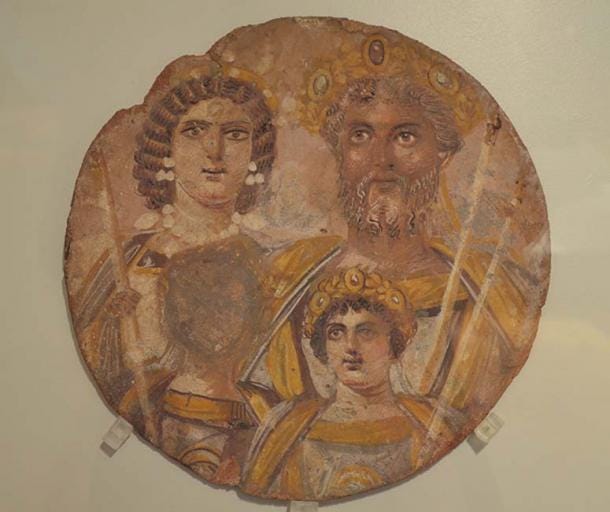The Arch of Caracalla, Theveste, Algeria
The Soul of Romanized Africa
Tébessa in Algeria was previously the ancient Roman city of Theveste (or Thebeste), where once existed an even older city called T’bessa.
In 146 BC, the Romans conquered the region and Theveste was founded in 75 AD near an old Berber village located next to the Aurès Mountains. The city was created in order to control the mountain region and protect their territories, much like Djemila which was founded in 96 AD.
During the 1st century, the Legio tertia Augusta (Third Augustan Legion) of the Imperial Roman army, resided there before being transferred west to Lambaesis. Theveste was made a colonia under Emperor Trajan. A Roman ‘colonia’ was originally an outpost, although the term came to denote the highest status of a Roman city.
Theveste flourished during the reign of Emperor Septimius Severus, father of Emperor Caracalla, and reached a population of nearly 30,000 inhabitants.
The Roman cities in North Africa ( Public Domain )
Theveste was raided by the Vandals, but it was rebuilt at the beginning of the reign of Justinian in the early 6th century. The city was nearly destroyed later on by invading Muslim forces, but a small village which was initially populated by a few surviving Christian Berbers, remained for centuries.
Modern Tébessa is very rich in ancient monuments, among them being a triumphal arch of Caracalla, a temple, a Christian basilica of the 4th century and the huge Byzantine wall.
The Arch of Caracalla was dedicated to the Severus family
The Arch of Caracalla is a tetrapylon - a type of ancient Roman monument of cubic shape, with a gate on each of the four sides generally built on a crossroads. The triumphal arch was built between 211 and 214 AD by means of a donation of 250,000 sestertii from Gaius Cornelius Egrilianus, Prefect of the XIV legion, who was originally from Theveste. Later, the arch was reused as the northern gate into the city wall which was built in in 539 AD, during the Byzantine period. The lateral arches were walled up, as was the northern one, until they were reopened by French military engineers during the colonial period.
Madauros: A Testament to the Vanished Glory of Rome in Algeria
The Palace of Diocletian: Roman Retirement Home and Palace Fortress of Croatia
Gone Forever? The History and Possible Future of the Recently Destroyed Monumental Arch of Palmyra
The arch is a 36 feet cube with two pairs of monolithic unfluted Corinthian columns on two sides. Over the keystones on the three visible sides are medallions containing busts in high relief: a lion, Minerva-Medusa and the Fortune of Theveste wearing her turreted crown. On the attic on three sides dedications are inscribed to the deified Emperor Septimius Severus, Julia Domna (his wife) and their son, Caracalla, who refused to share power and murdered his brother and co-emperor Geta in 211 AD. On the fourth side is a reconstructed Byzantine inscription, originally found in the infill of the vaults, which refers to the incorporation of the arch into the Byzantine city wall as the work of a top-level military command, Solomon, who distinguished himself as a commander in the Vandalic War and the re-conquest of North Africa in 533–534. At the center on all sides, the entablature supported a small shrine which held a statue.
Septimius Severus with Julia Domna, Caracalla and Geta (erased) ( CC BY-SA 2.0 )
The arch’s provincial architectural style has led it to be described as “a rude Numidian tenant–farmer overdressed for a holiday” or more accurately as epitomizing “the very soul and taste of Romanized Africa”.
Crispina, a wealthy woman who was beheaded in Theveste
Over 700 inscriptions reveal the bureaucratic importance of Theveste. Recorded are benefactors such as the Prefect of a legion who gave 250 000 sestertii in 214 AD for bath oil. The same amount that was given for the arch of Caracalla. Another philanthropist, A. Titinius and his son gave sums of money between 163 and 165 to supply a building with a gilt coffered ceiling and a statue of Saturn.
The House of Arsacid Falls to the House of Sasan: It Started with a Wedding – Part I
A Succinct Timeline of Roman Emperors—400 Years of Power Condensed
Roman inscription at Teveste (Alföldy, G / CC BY-SA 3.0 )
The jewel of Theveste, the Christian basilica, lies 2000 feet north of the arch. It dates from the early 6 th century. The lower floor of a nearby building may have been used as a stable. Theveste became a place of pilgrimage because of its association with the aristocrat born Saint Crispina, who was born in Thagora, Algeria and martyred under the Diocletian persecutions. Diocletian's name is associated with the last and most terrible of all the ten persecutions of the early Church.
Crispina belonged to a distinguished family and was a wealthy woman with children. At the time of the persecution she was brought before the proconsul Anulinus. On being ordered to sacrifice to the gods she declared she honored only one god. Her head was shaved at the command of the judge, and she was exposed to public mockery, but she remained steadfast. She was beheaded in Theveste in 304 AD.
Volubilis Arch of Caracalla, Morocco (Prioryman / CC BY-SA 3.0 )
Two other arches dedicated to Caracalla also exist in Africa. One in the ancient city of Djémila, Algeria and the other located in the ancient city of Volubilis, Morocco.
Top image: The arch of Caracalla in the Roman city Theveste. Source: ( Public Domain )





